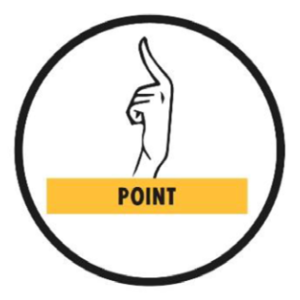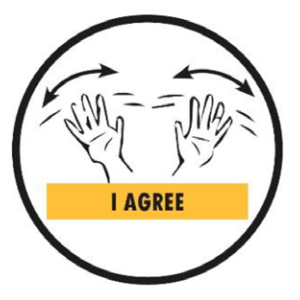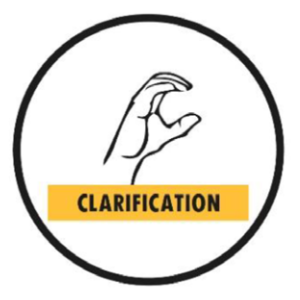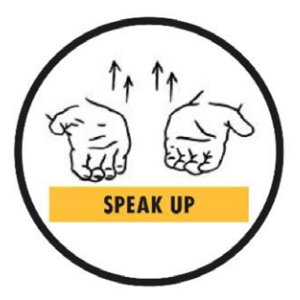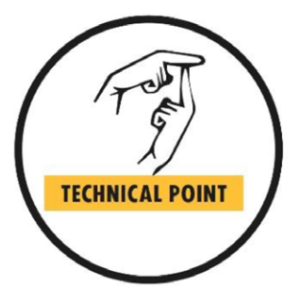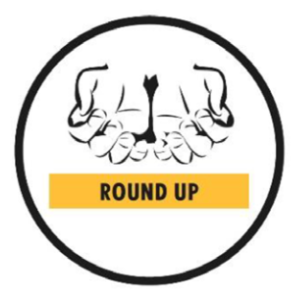Hand Signals
Assemblies maintain inclusivity and ensure all voices are heard equally by using hand signals to facilitate the discussion.
Point (or ‘I would like to speak’)
When someone in the group wants to say something, they should point their index finger up and wait for the facilitator to let them have their turn in speaking. It is vital that people do not talk over anyone else and wait for their turn. If someone, who has not yet said anything, puts their finger up to speak, whilst others have spoken a lot, then the facilitator should give that person priority over the ‘stack’ (the queue or order of speakers based on the order they raised their finger to speak).
Online consideration: If people do not have their video turned on, they can type STACK in the chat or use the raised hand in the participants’ panel, or say ‘stack’ for their name to be stacked.
Wavy Hands (I Agree)
The ‘wavy hands’ signal of approval is used to show agreement or support for something someone has said. If everybody erupts into a forest of waving hands during a breakout session, for example, the note-taker can see that this is one of the more popular points made and it will become one of the key bullet points fed back to the main meeting room.
Online consideration: If people do not have their video turned on, they can use the ‘clapping hands’ icon under ‘more’ in the participants’ panel, or write ‘AGREE’ in the chat.
Clarification
If someone says something that is unclear, people can hold their hand in a ‘C’ shape as the ‘clarification’ signal. The facilitator will then pause the discussion giving the person who made the signal the opportunity to ask a question to clear up any confusion.
Online consideration: If people do not have their video turned on, they can write ‘Clarify’ in the chat, or unmute and say ‘Clarify' and their name.
Speak up
If someone is speaking too quietly or they cannot be heard, others can ask them to raise their voice by raising and lowering their hands with palms open and facing up.
Online consideration: If people do not have their video turned on, they can write ‘Speak Up’ in the chat, or unmute and say ‘speak up’ or use the ‘thumbs up’ icon in the participants panel. If using this second option you will need to explain to the whole assembly what the thumbs up icon means so they know to increase their volume if speaking.
Direct Point
If someone has directly relevant information to what is being said, then they can make the ‘direct point’ hand signal and the facilitator will let them provide that information immediately after the person speaking has finished. The direct point signal is not an excuse to jump the queue just to make a point. It is important that people do not abuse this signal as otherwise it can make all present lose trust in the process.
Online consideration: If people do not have their video turned on, they can write Direct Point or DP in the chat, or unmute and say ‘Direct Point’ and their name.
Technical point
If someone has information that is immediately relevant to the running of the meeting, they make a ‘technical point’ signal by making a ‘T’ shape with their hands. This is only to be used for concerns external to the discussion that need to be addressed immediately e.g. “We only have ten minutes left” or “I am the note taker and I need the loo so can someone else take over?” The facilitator should stop the discussion to address the technical point.
Online consideration: If people do not have their video turned on, they can write Technical Point or TP in the chat, or unmute and say ‘Technical Point’ and their name.
Round Up
Facilitators need to ensure that no one speaks for more than necessary (two minutes is a suggested maximum amount of time as it encourages people to be concise). If someone has been speaking for two minutes (or whatever the set amount of time is), the facilitator makes the ‘round up’ hand signal by repeatedly making a circular motion with their hands (as if they a tracing a ball). This must be done sensitively, but firmly as it ensures that no one person dominates the meeting.
Online consideration: If people do not have their video turned on, they can use the ‘time’ icon under ‘more’ in the participants panel.
Temperature check
Jiggle the fingers on the palms of both hands at a level that corresponds with feelings. If hands are pointed upwards and jiggled, this suggests support. If they are held horizontally, this suggests people are ambivalent, and if they are pointed downwards, then this suggests that people do not support something. A temperature check can be used to quickly check the feelings of the group.

